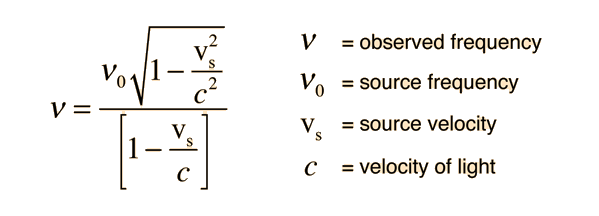

In this case, the relative motion of the source and the receiver is toward one another. In the example of the police siren above, the frequency appears higher to the stationary observer as the car approaches. The change or difference in frequency between the transmitted frequency and the received frequency, caused by the motion, is the Doppler shift frequency (often abbreviated as “Doppler shift” or “Doppler frequency”). However, the relative motion between the sound source and the receiver distorts the pattern of symmetric wavefronts and the observed frequency increases or decreases, depending upon the direction of movement. The only circumstance in which these “transmitted” and “observed” frequencies are the same is when the boat is stationary.Ī stationary observer views the same number of pressure waves as are emitted by the stationary source ( Figure 5-1). As the boat moves faster in either direction, the difference between the actual and observed frequencies becomes greater. If the boat turns around and begins heading south, this time with the wind (away from the source of the waves), fewer crests are seen, and to the observer the frequency appears to decrease. The observer standing in the boat sees an increase in the wave frequency, although, in actuality, the frequency of the cresting waves has not changed.

If the boat begins traveling in a northerly direction, into the wind, the wave crests are encountered more frequently.

If the wind is blowing at a constant rate from the north and the waves all have the same distance between peaks (same wavelength), the stationary boat will encounter the same number of wave crests each second (constant frequency) as are produced by the wind. Imagine a situation in which an observer is standing in a boat in the middle of a lake. In the above illustration, the sound source is the moving vehicle, while the receiver or observer is the stationary pedestrian. When a police car with siren blaring passes a pedestrian, the audible sound is heard as a change in frequency or pitch as the vehicle approaches (the frequency appears to be higher) while the frequency of the retreating vehicle after it passes is observed to be lower. The apparent frequency change produced by the Doppler effect is based on the relative motion between the source of sound and the observer, regardless of which is moving and which is stationary. The most basic (inexpensive) systems offer only a single option for the Doppler mode (velocity analysis or two-dimension Doppler imaging, i.e. Some scanners offer several Doppler modes, which are selectable by the user. Although each relies on the Doppler effect to detect motion, the manner in which flow information is acquired, processed, and displayed distinguishes one type of instrument from another. Several types of Doppler devices are available. Doppler ultrasound is a valuable tool because this methodology detects the presence, direction, velocity, and time variation of blood flow within blood vessels and in the heart. The Doppler effect is the observed change in frequency of a transmitted wave due to the relative motion between the source of the sound and the receiver or observer.


 0 kommentar(er)
0 kommentar(er)
